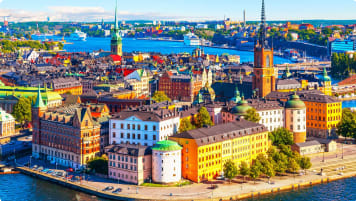Sweden
Discovering Scandinavia Sweden‘s history and culture. This is the second article in a three part series on Scandinavia. We learn about Sweden’s history, as well as its famous design principles. Stay tuned for part three…
17 Oct 19 · 15 mins read
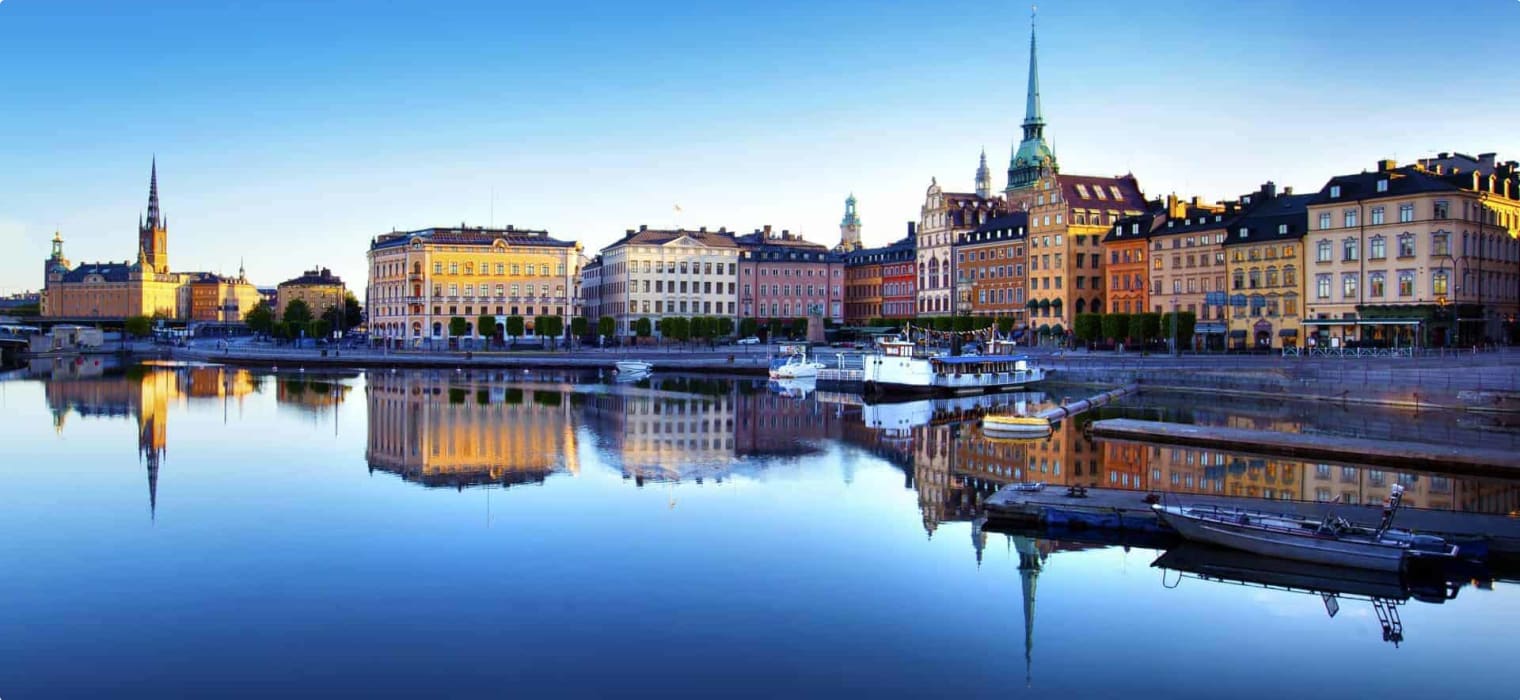
Discovering Scandinavia
Sweden‘s history and culture. This is the second article in a three part series on Scandinavia. We learn about Sweden’s history, as well as its famous design principles. Stay tuned for part three on the wonders of Norway.
Small group tours of Scandinavia
On our Scandinavian tour for mature travellers (both couple and solo travellers are welcome!), you will uncover a Viking past travelling with like-minded people. We catch a glimpse of the world’s biggest fjords, and some fabulous scenery, on a journey through Norway, Sweden, and Denmark.
In low-lying Denmark, we visit meticulously-maintained urban centres, including the vibrant capital of Copenhagen. The small group tour takes us to Sweden and its capital, Stockholm, now the financial capital of the region. After Sweden, we journey over magnificent mountains and skirt picturesque fjords of Norway to reach Bergen.
The 13 day Scandinavia Tours for mature travellers conclude in Norway, a country famed for its amazing landscapes with a rocky coastline. What these countries share in common is natural beauty, and vibrant, unforgettable Scandinavian culture.
Part of Sweden’s appeal for many travellers is its distinctive design style. If you are interested in Scandinavian design, we explore Sweden, Denmark and Finland on our 21 day Scandinavian Design small group tour.
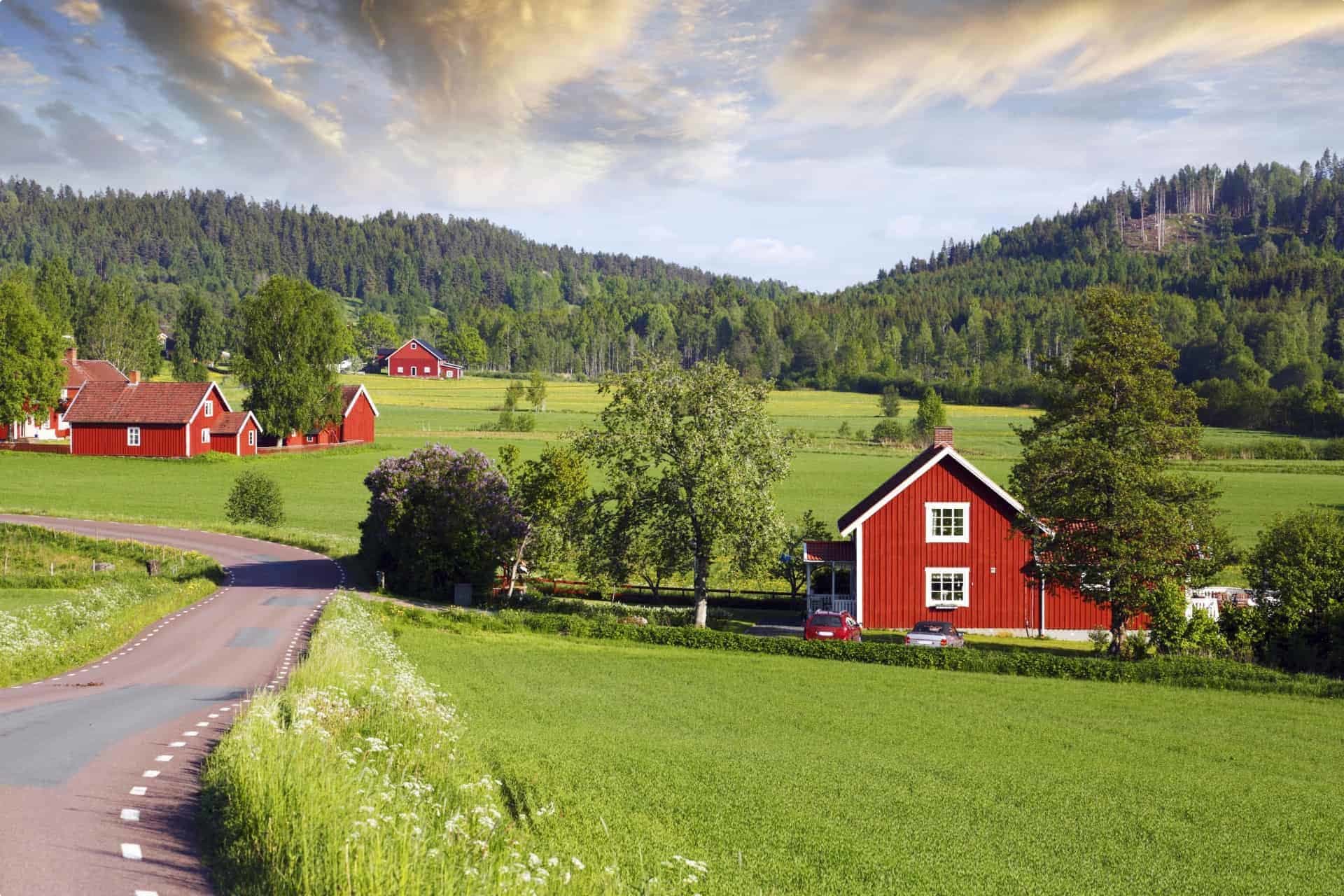
Sweden
Sweden (Sverige) is the largest of the Scandinavian countries, with a population of about 9.5 million. It borders Norway to the west and Finland to the north-east, and is connected to Denmark via the bridge of Öresund (Öresundsbron). The Baltic Sea lies to the east of Sweden, and the Gulf of Bothnia separates Sweden from most of Finland. The northernmost part of Sweden belongs to the Arctic.
Sweden was a strong military power and spanned an area about three times its current size during the 17th century. But today, Sweden has not participated in any war in almost two hundred years. Sweden has long remained outside military alliances, including during both World Wars. As a result, it has a high peace profile. Sweden is a monarchy by constitution, but King Carl XVI Gustaf has no executive power. Stockholm, undoubtedly one of the world’s most striking capital cities, reflects this royal heritage in its palaces and architecture. Swedish people were Pagans until around the year 1000 AD. They were then Christened and obedient to the Roman Pope until the 16th century, when the church was reformed to Lutheran-Protestant. Today, Sweden is a secular state.
Sweden today
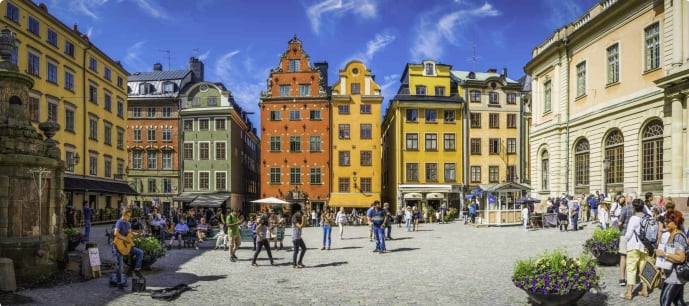
Sweden is a developed post-industrial society with an advanced welfare state. The standard of living and life expectancy rank among the highest in the world. Sweden joined the European Union in 1995, but elected not to commit to the European Monetary Union and Euro currency in a 2003 referendum.
Leadership of Sweden has for the larger part of the 20th century been dominated by the Social Democratic Party, which started out at the end of the 19th century as a labor movement. Since the 2006 election, a coalition of centre-right liberal/conservative parties hold the power.
Sweden has a strong tradition of being an open, yet discreet country. Citizens sometimes appear to be quite reserved at first, but once they get to know you, they are as warm and friendly as you could hope for. Sweden hosts the Nobel Prize committee for all the prizes except the peace prize, which is hosted in Oslo. This is in honour of the Swedish-Norwegian union that was dissolved in 1905.
History of Sweden: the Middle Ages
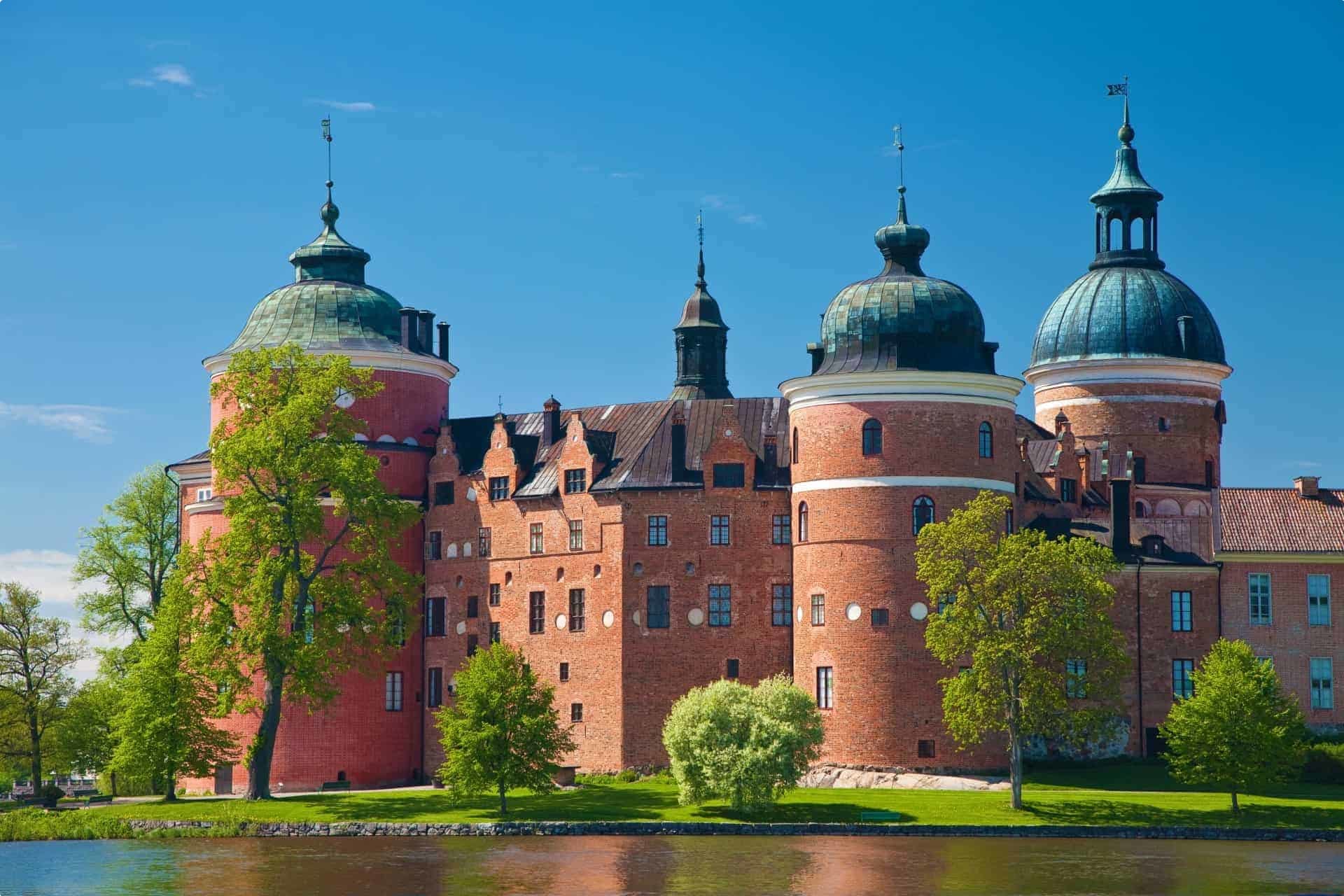
Sweden emerged as an independent and unified country during the Middle Ages. Gustav Vasa (born Gustav Eriksson) was King of Sweden from 1523 until his death in 1560. He led the Swedish War of Liberation against King Christian II. Christian held the rule of Denmark, Norway and Sweden: a region known as the Kalmar Union. But this troubled union saw many tensions, including the Stockholm Bloodbath. This event took place over several days in November of 1520. It is understood that the execution of a large number of Swedish nobles was undertaken at Christian’s command, despite his attempts to justify the actions as necessary to avoid papal interdict.
Among the men killed was Gustav’s father. Gustav himself was of low standing, but rose as leader of a rebel movement following the bloodbath. Gustav was elected commander of the Swedish region in January 1521. He had garnered considerable support by travelling north, seeking rebels to join the cause. Christian caught wind of the rebellion in April 1521, and sent an army to crush Gustav and his men. But instead, the King’s army was defeated. By the end of April, Gustav controlled the regions we now know as Sweden.
Subsequently referred to as the Father of the Nation, Gustav was nonetheless a brutal leader, suppressing any further uprisings. Gustav I broke not only with Danish supremacy but also the Roman Catholic Church. He introduced reforms by raising taxes and appointing governors and bishops. He died of illness in 1560.
17th century Sweden
In the 17th century, the country expanded its territories to form the Swedish Empire. The empire grew to be one of the great powers of Europe in the 17th and early 18th century. Most of the conquered territories outside the Scandinavian Peninsula were lost during the 18th and 19th centuries. The eastern half of Sweden, present-day Finland, was lost to Russia in 1809. The last war in which Sweden was directly involved was in 1814, when Sweden forced Norway into a personal union.
Swedish Empire
Sweden rose to prominence on a continental scale during the tenure of king Gustavus Adolphus (grandson of Gustav Vasa), seizing territories from Russia and Poland–Lithuania in multiple conflicts, including the Thirty Years’ War. During the Thirty Years’ War, Sweden conquered approximately half of the Holy Roman states. Gustav Adolphus planned to become the new Holy Roman Emperor, ruling over a united Scandinavia and the Holy Roman states, but he died at the Battle of Lützen in 1632.
After the Battle of Nördlingen, Sweden’s only significant military defeat of the war, pro- Swedish sentiment among the German states faded. These German provinces excluded themselves from Swedish power one by one, leaving Sweden with only a few northern German territories: Swedish Pomerania, Bremen-Verden and Wismar.
Stockholm in mid-17th century
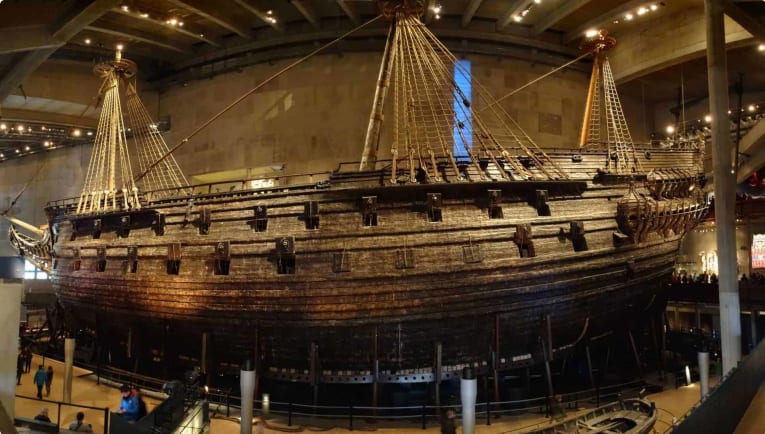
By the middle of the 17th century, Sweden was the third largest country in Europe by land area. It was surpassed only by Russia and Spain. Sweden reached its largest territorial extent under the rule of Charles X after the treaty of Roskilde in 1658. The foundation of Sweden’s success during this period is credited to Gustav I’s major changes on the Swedish economy in the 16th century, and his introduction of Protestantism.
One-third of the Finnish population died in the devastating famine that struck the country in 1696. Famine also hit Sweden, killing roughly 10% of Sweden’s population. The Swedes conducted a series of invasions into the Polish-Lithuanian Commonwealth, known as the Deluge. After more than half a century of almost constant warfare, the Swedish economy had deteriorated. It became the lifetime task of Charles’ son, Charles XI, to rebuild the economy and refit the army.
The legacy of Charles XI, and the invasion of Russia
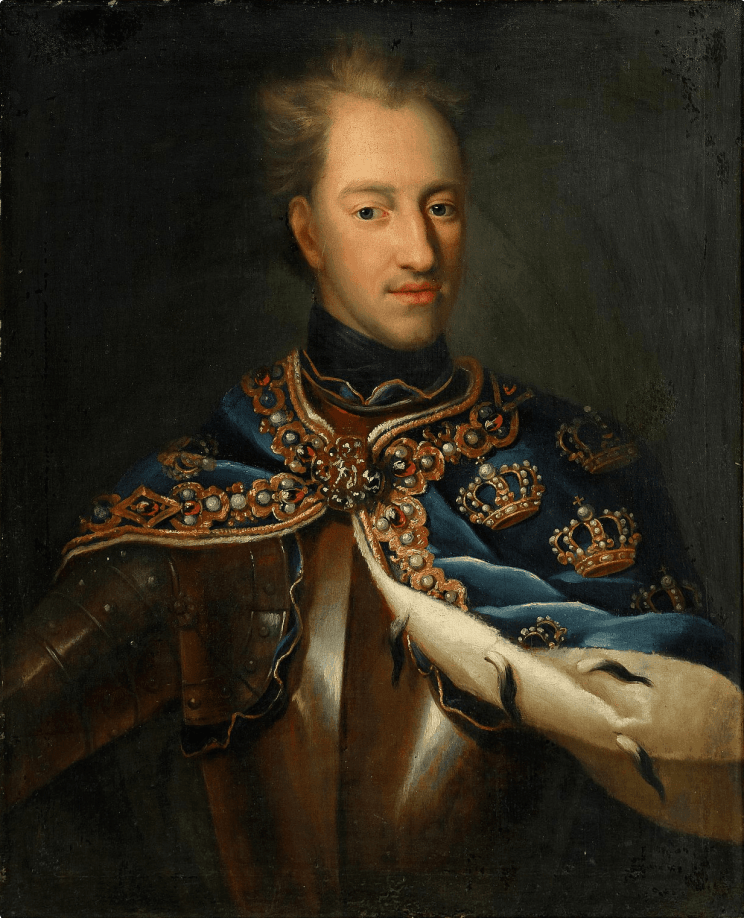
Charles XI’s legacy to his son, the coming ruler of Sweden Charles XII, was one of the finest arsenals in the world: a large standing army and a great fleet. Sweden’s largest threat at this time, Russia, had a larger army but was far behind in both equipment and training. After the Battle of Narva in 1700, one of the first battles of the Great Northern War, the Russian army was so severely decimated that Sweden had an open chance to invade Russia.
However, Charles did not pursue the Russian army, instead turning against Poland-Lithuania and defeating the Polish king Augustus II and his Saxon allies at the Battle of Kliszow in 1702. This gave Russia time to rebuild and modernize its army. After the success of invading Poland, Charles decided to make an invasion attempt of Russia which ended in a decisive Russian victory at the Battle of Poltava in 1709. After a long march exposed to Cossack raids, Russian Tsar Peter the Great’s scorched-earth techniques, and the extremely cold winter of 1709, the Swedes stood weakened with a shattered morale and enormously outnumbered against the Russian army at Poltava.
The end of the Swedish Empire
The defeat meant the beginning of the end for the Swedish Empire. In addition, the plague raging in East Central Europe devastated the Swedish dominions and reached Central Sweden in 1710. Charles XII attempted to invade Norway in 1716; however, he was shot dead at Fredriksten fortress in 1718. The Swedes were not militarily defeated at Fredriksten, but the whole structure and organization of the campaign fell apart with the king’s death. The army withdrew. Forced to cede large areas of land in the Treaty of Nystad in 1721, Sweden also lost its place as an empire and as the dominant state on the Baltic Sea.
With Sweden’s lost influence, Russia emerged as an empire and became one of Europe’s dominant nations. As the war finally ended in 1721, Sweden had lost an estimated 200,000 men, 150,000 of those from the area of present-day Sweden and 50,000 from the Finnish part of Sweden. In the 18th century, Sweden did not have enough resources to maintain its territories outside Scandinavia, and most of them were lost, culminating with the 1809 loss of eastern Sweden to Russia. This became the highly autonomous Grand Principality of Finland in Imperial Russia. In the interest of re-establishing Swedish dominance in the Baltic Sea, Sweden allied itself against its traditional ally and benefactor, France, in the Napoleonic Wars.
Sweden’s last war
Sweden’s role in the Battle of Leipzig gave it the authority to force Denmark-Norway, an ally of France, to cede Norway to the King of Sweden on 14 January 1814. This was done in exchange for northern German provinces, at the Treaty of Kiel. The Norwegian attempts to keep their status as a sovereign state were rejected by the Swedish king, Charles XIII. He launched a military campaign against Norway on 27 July 1814, ending in the Convention of Moss, which forced Norway into a personal union with Sweden under the Swedish crown. This lasted until 1905. The 1814 campaign was the last time Sweden was at war.
Mass emmigration
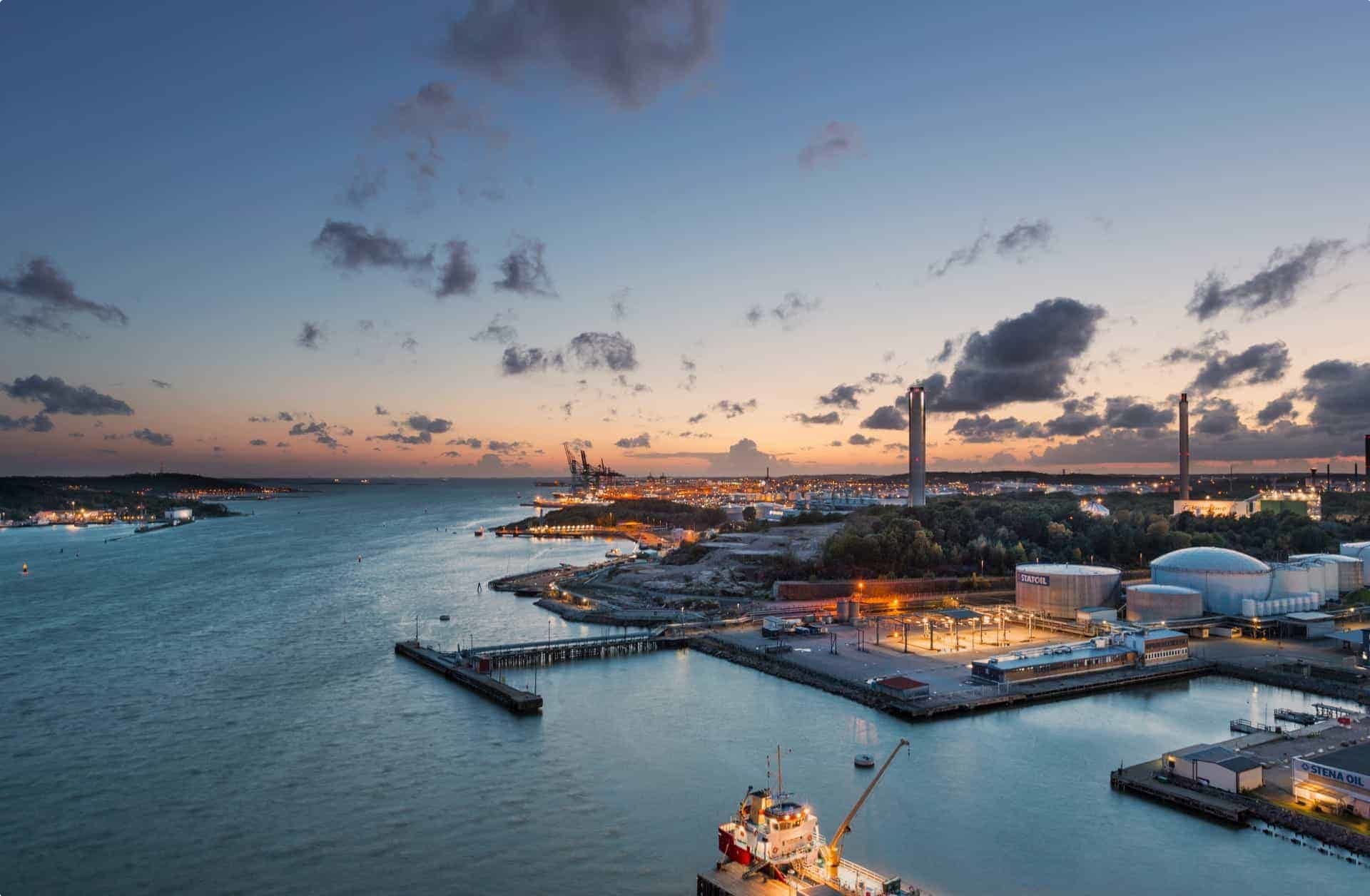
There was a significant population increase during the 18th and 19th centuries, which the writer Esaias Tegnér in 1833 attributed to “the peace, the smallpox vaccine, and the potatoes”. Between 1750 and 1850, the population in Sweden doubled. According to some scholars, mass emigration to America became the only way to prevent famine and rebellion; over 1% of the population emigrated annually during the 1880s. Nevertheless, Sweden remained poor, retaining a nearly entirely agricultural economy even as Denmark and Western European countries began to industrialize.
Coming to America
Many looked towards America for a better life during this time. It is believed that between 1850 and 1910 more than one million Swedes moved to the United States. In the early 20th century, more Swedes lived in Chicago than in Gothenburg (Sweden’s second largest city). Most Swedish immigrants moved to the Midwestern United States, with a large population in Minnesota. Others spread to further throughout the United States and Canada.
Despite the slow rate of industrialization into the 19th century, many important changes were taking place in the agrarian economy because of innovations and the large population growth. These innovations included government-sponsored programs of enclosure, aggressive exploitation of agricultural lands, and the introduction of new crops such as the potato. Because the Swedish peasantry had never been enserfed as elsewhere in Europe, the Swedish farming culture began to take on a critical role in the Swedish political process, which has continued through modern times within the modern Agrarian party (now called the Centre Party).
Between 1870 and 1914, Sweden began developing the industrialized economy that exists today. Strong grassroots movements sprung up in Sweden during the latter half of the 19th century (trade unions, temperance groups, and independent religious groups), creating a strong foundation of democratic principles. In 1889 The Swedish Social Democratic Party was founded. These movements precipitated Sweden’s migration into a modern parliamentary democracy, achieved by the time of World War I. As the Industrial Revolution progressed during the 20th century, people gradually began moving into cities to work in factories, and became involved in socialist unions. A communist revolution was avoided in 1917, following the re-introduction of parliamentarism, and the country was democratized.
World Wars
Sweden remained officially neutral during World War I and World War II, although its neutrality during World War II has been disputed. Sweden was under German influence for much of the war, as ties to the rest of the world were cut off through blockades. The Swedish government felt that it was in no position to openly contest Germany and therefore made some concessions. Sweden also supplied steel and machine parts to Germany throughout the war. However, Sweden supported Norwegian resistance, and in 1943 helped rescue Danish Jews from deportation to concentration camps.
Sweden also supported Finland in the Winter War and the Continuation War with volunteers and material. Toward the end of the war, Sweden began to play a role in humanitarian efforts. Many refugees, among them Jews from Nazi-occupied Europe, were saved partly because of the Swedish involvement in rescue missions at the internment camps. Furthermore, Sweden served as a haven for refugees, primarily from the Nordic countries and the Baltic states. The Swedish diplomat Raoul Wallenberg and his colleagues may have saved up to 100,000 Hungarian Jews. Nevertheless, internal and external critics have argued that Sweden could have done more to resist the Nazi war effort, even if risking occupation.
Post-war era
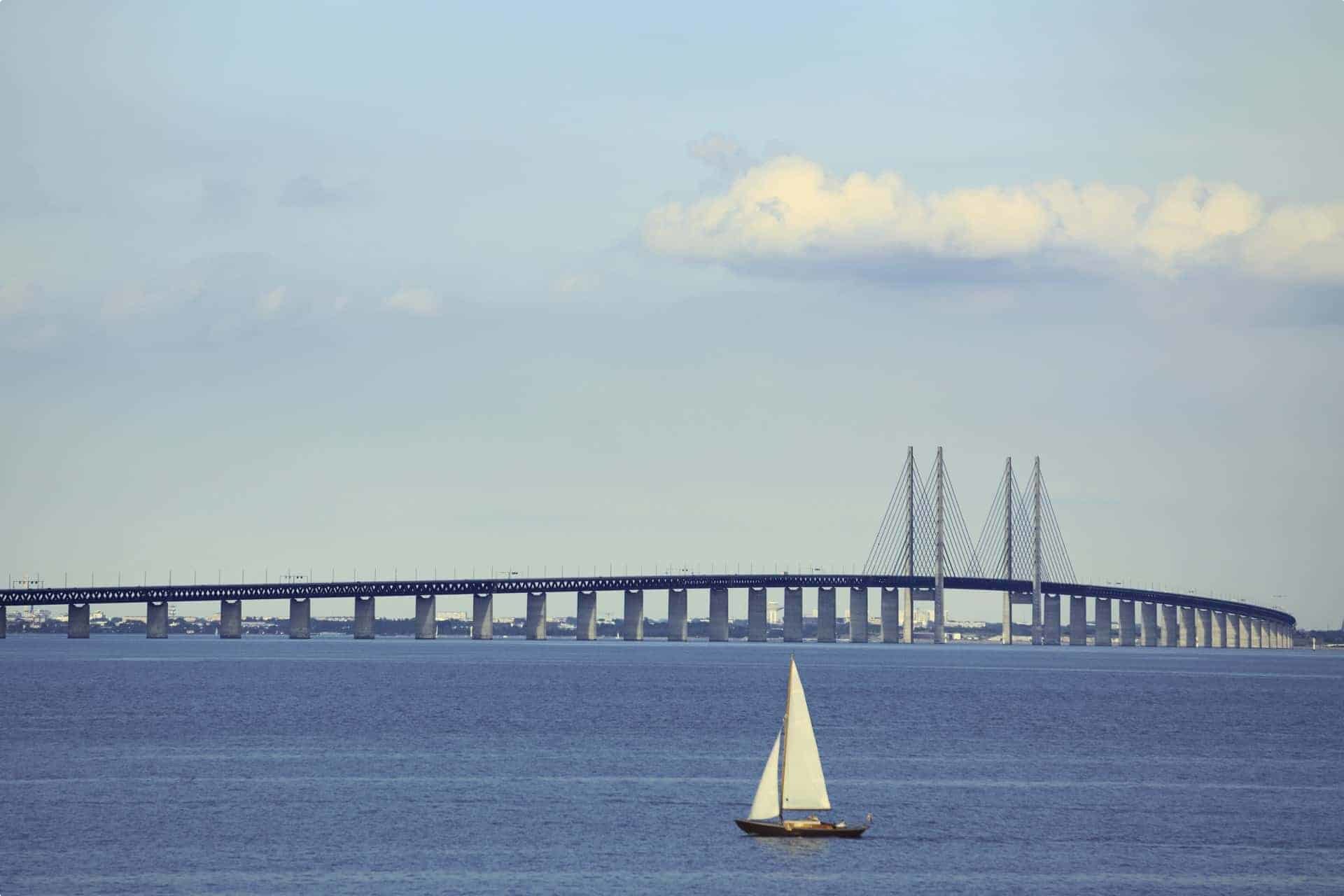
Sweden was officially a neutral country and remained outside NATO or Warsaw pact membership during the Cold War. Privately, however, Sweden’s leadership had strong ties with the United States and other western governments. Following the war, Sweden took advantage of an intact industrial base, social stability and its natural resources to expand its industry to supply the rebuilding of Europe. Sweden was part of the Marshall Plan and participated in the Organization of Economic Co-operation and Development (OECD).
During most of the post-war era, the country was governed by the Swedish Social Democratic Party, largely in cooperation with trade unions and industry. The government actively pursued an internationally competitive manufacturing sector of primarily large corporations. Sweden, like countries around the globe, entered a period of economic decline and upheaval following the oil embargoes of 1973–74 and 1978–79. In the 1980s, pillars of Swedish industry were massively restructured. Shipbuilding was discontinued, wood pulp was integrated into modernized paper production, the steel industry was concentrated and specialized, and mechanical engineering was robotized.
Between 1970 and 1990 the overall tax burden rose by over 10%, and the growth was low compared to other countries in Western Europe. Eventually, government began to spend over half of the country’s gross domestic product. Sweden’s GDP per capita ranking declined during this time.
Recent history
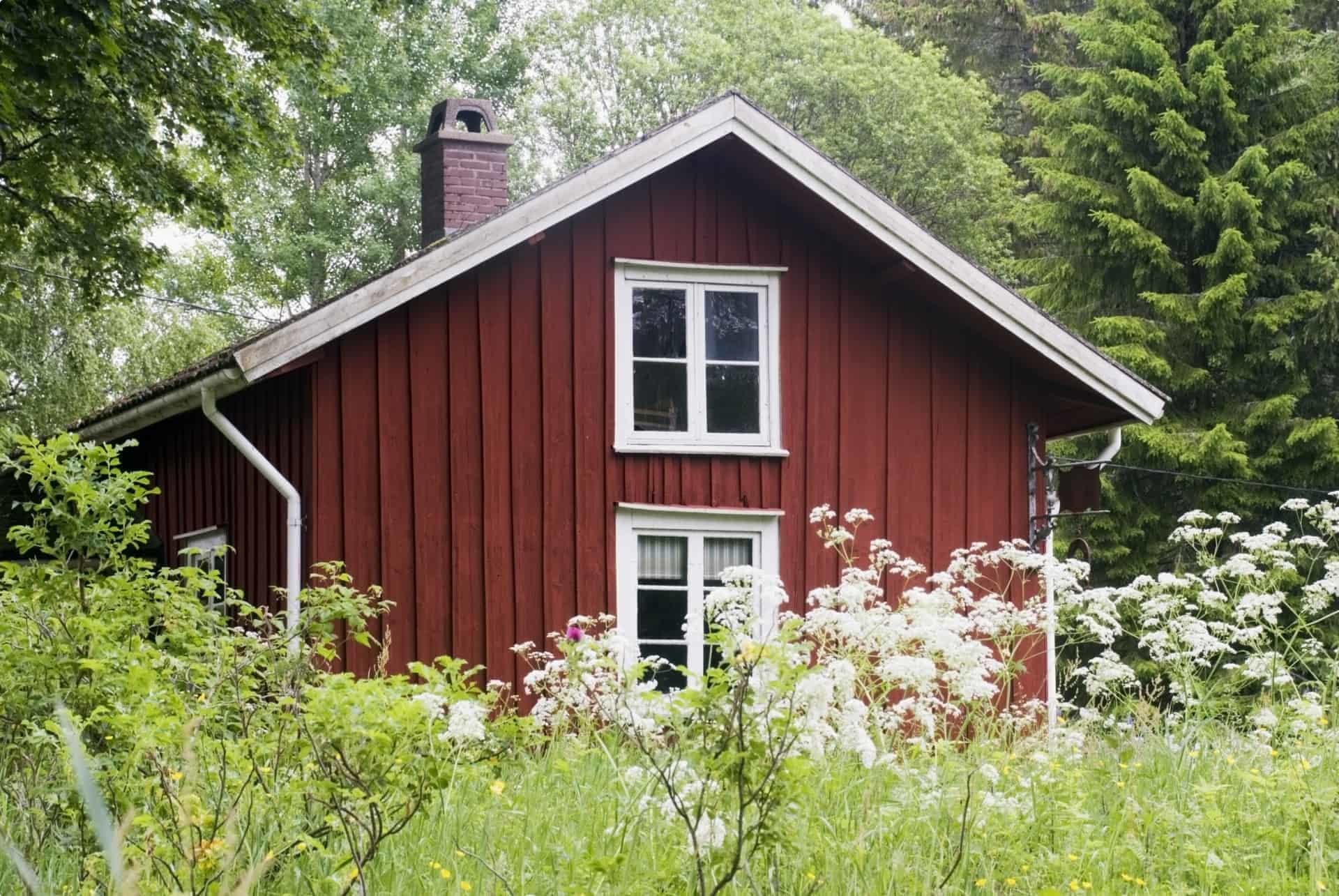
Sweden joined the European Union in 1995 and signed the Lisbon Treaty in 2007. A bursting real estate bubble caused by inadequate controls on lending combined with an international recession and a policy switch from anti-unemployment policies to anti-inflationary policies resulted in a fiscal crisis in the early 1990s. Sweden’s GDP declined by around 5%. The response of the government was to cut spending and institute a multitude of reforms to improve Sweden’s competitiveness, among them reducing the welfare state and privatizing public services and goods.
Much of the political establishment promoted EU membership. On the 13th November 1994, a referendum passed with 52% in favour of joining the EU. Subsequently, this was carried out on the 1st January 1995. Sweden remains non-aligned militarily, although it participates in some joint military exercises with NATO and some other countries. Additionally, it lends extensive cooperation with other European countries in the areas of defence technology and industry.
Sweden also has a long history of participating in international military operations. This includes most recently, Afghanistan, where Swedish troops are under NATO command. There are also EU sponsored peacekeeping operations in Kosovo, Bosnia and Herzegovina, and Cyprus. Sweden held the chair of the European Union from 1 July to 31 December 2009.
Governance
Sweden is a constitutional monarchy, in which King Carl XVI Gustaf is head of state, but royal power has long been limited to ceremonial and representative functions. The nation’s legislative body is the Riksdag (Swedish Parliament), with 349 members, which chooses the Prime Minister. Parliamentary elections are held every four years, on the third Sunday of September.
The Oresund Bridge
The Oresund Bridge connects Malmo, Sweden to Denmark’s Copenhagen. Construction on the bridge commenced in 1995, and it is the longest combined motorway and rail bridge in all of Europe. Not only has the impressive bridge connected these Scandinavian countries, it has also created a vibrant new region within 100km of the bridge.
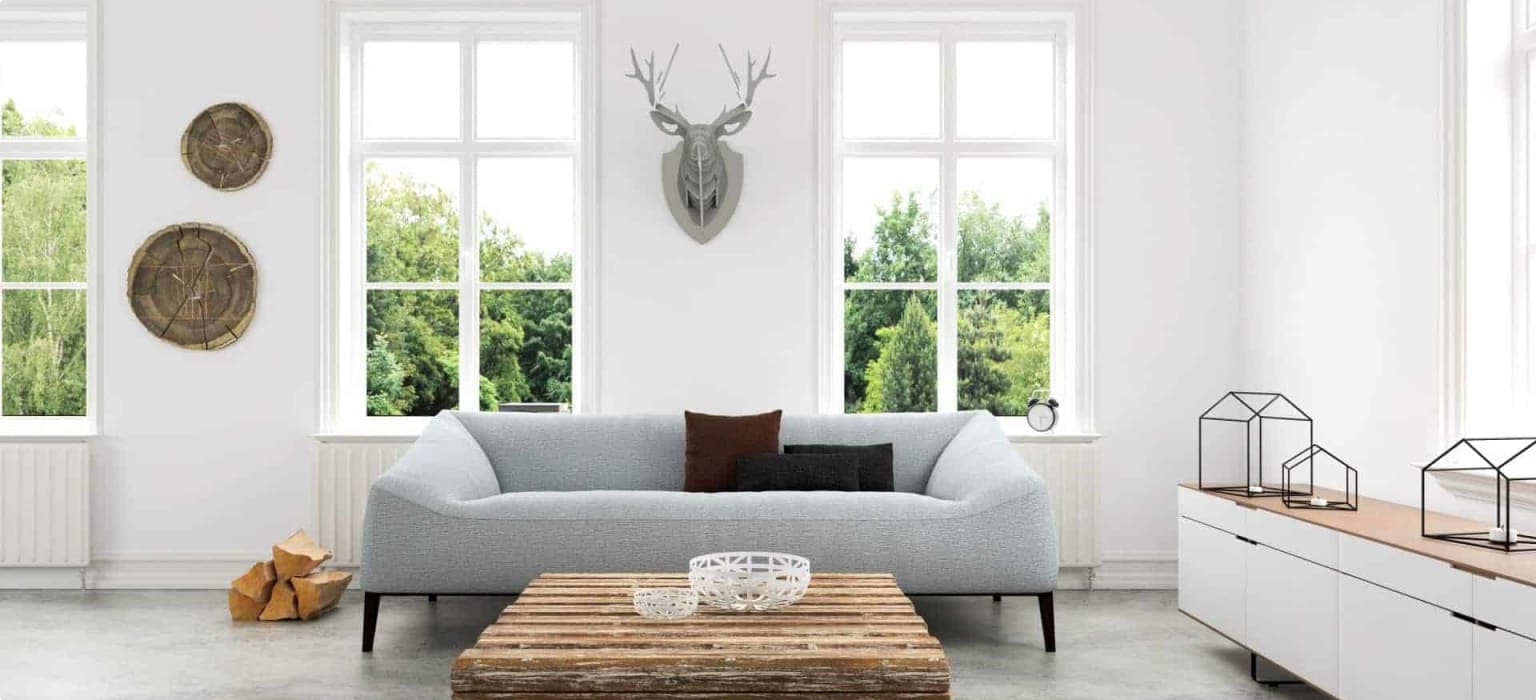
Scandinavian Design
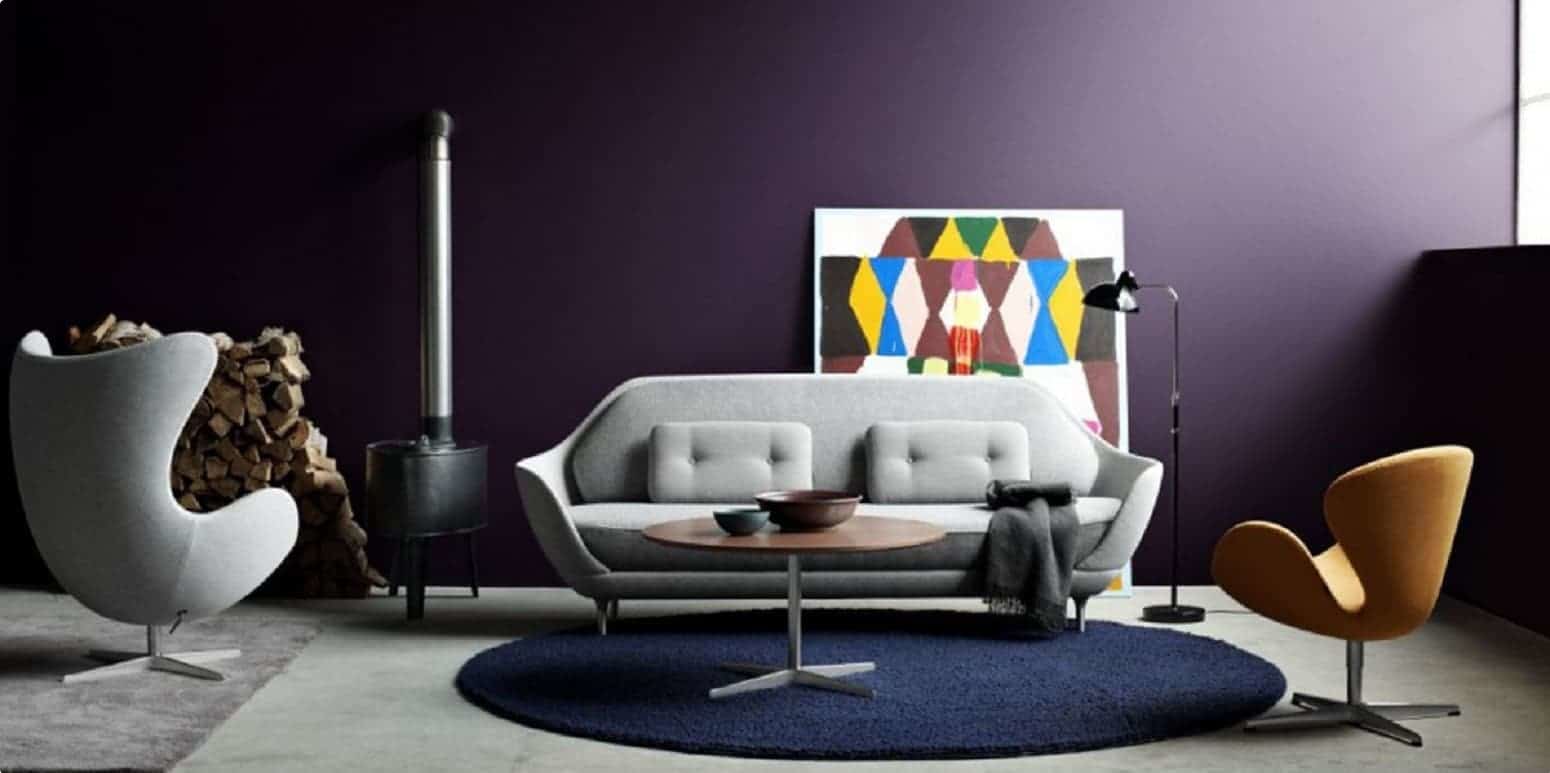
The term “Swedish design” is synonymous with simplicity, functionality and minimalism. These design ideals emerged out of the Scandinavian/Nordic region early in the twentieth century, and flourished in post WWII in particular. In Swedish design, the focus is on clean lines. Many associate it with furniture, but it was pioneered by other craftspeople and designers too, including Anders Beckman (for graphics), Märta Måås-Fjetterström and Astrid Sampe (for textiles), and Sixten Sason (industrial). Bruno Matthson is credited for his work in Swedish furniture design.
As Sweden’s official website explains, “Swedish design is so much more than minimalism and IKEA”. It is also socially-oriented, with a focus on reflecting people’s lives and ways of living. Accessibility is key: there is a spirit of democracy behind these ideals. “Emotional values are added to the familiar functional approach”. This article by Jonna Dagliden Hunt provides further information on the history and principles of Swedish design.
In 2012, Helsinki, Finland was named the World Design Capital, and also carried a philosophy of designing for social good and “embedding design in life“. Lucy Watson in the Financial Times reports that funding for design fairs in Helsinki has risen since then, “and in 2019 the quality and breadth of work on show reflects that investment”. She went to the Habitare fair, Finland’s biggest fair focused on interior decoration, design, and furniture. You can see samples of the design on Habitare’s Instagram.
If you have a keen interest in design, our Scandinavian Design small group tour visits Sweden, Denmark and Finland.
3 of the best design destinations in Sweden
Gothenburg
Gothenburg is the second-largest city in Sweden. It is situated on the west coast, and home to many students owing to its large universities. This lends Gothernburg a youthful, vibrant atmosphere. Gothenburg is very walkable, and its Neoclassical, and National Romantic architecture will leave an impression. Gothenburg has always been an important trade city, and its 17th century canals attest to this. It is rich is well-preserved maritime and nautical history, but you’ ll also notice its’ design credentials, including the Volvo Museum. The Gothenburg University School of Design & Craft (or HDK) is also well worth a visit. This is where the country’s up-and-coming designers are made.
Boras
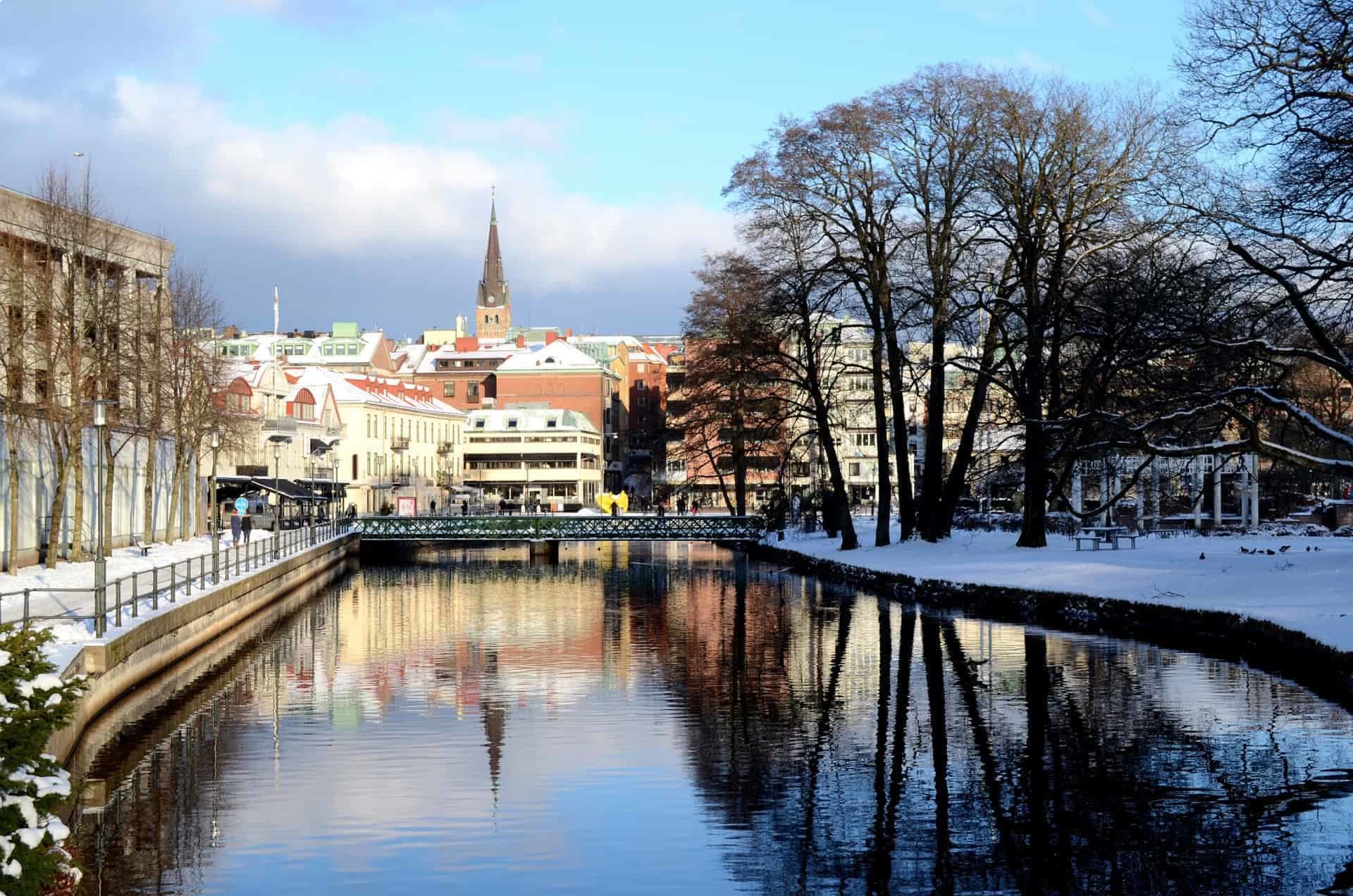
Located 45 minutes inland from Gothenburg, charming Boras has a strong history in textiles. In the 19th and 20th century, textile manufacturing was a major trade here, and this legacy lives on. A dye house, weaving mill and sewing factory are still standing, offering great insights into Sweden’s history. Furthermore, the Swedish School of Textiles pulls that history into the present. This exciting institution is one of Europe’s top textile education and research facilities.
While in Boras, you will also notice that design principles have spilled out onto the streets. The city is known for its outdoor sculptures, and has embraced its street art. A guide to Boras can be found here.
Kosta
Cross the central Swedish forests and you will reach Kosta, located in southern Sweden. Glass has placed this small village on the map. The house of Kosta Boda was established in 1742, and it remains one of the world’s leading brands of glassware and art glass. It was named for its founders, Generals Koskull and Staël von Holstein (Ko + Sta). The original furnaces continue to produce bold and innovative pieces, thanks to the talent of designers here. Kosta Boda is at the cutting edge (pardon the pun) of tradition and technology, and is well worth a visit on your tour of Sweden. Discover more by visiting the Kosta Boda website.
5 top attractions in Stockholm and surrounds
1. City Hall
Stockholm’s City Hall is one of the most distinctive buildings in the city’s skyline. Designed by Ragnar Östberg, the 106 metre tower is topped by a spire with three golden crowns. This is the Swedish national coat of arms. City Hall hosts the Nobel banquet, and also houses offices, ceremonial halls, and impressive pieces of art.
2. Old Town

Gamla stan, or Old Town, is one of the best preserved medieval city centre in all of Europe. It is the site upon which Stockholm was founded, back in 1252. Very popular with travellers, it is described as like a “pedestrian-friendly museum”, where you can stroll around and might stumble across cellar vaults or frescoes, or general curios in its interesting shops. Stockholm Cathedral, the Nobel Museum and Royal Palace are among the attractions in Stockholm’s Old Town.
3. Vasa Museum
This impressive maritime museum displays the only near-fully intact 17th century ship that has ever been salvaged. The Vasa sank in 1628 on its maiden voyage, and was recovered 333 years later in 1961. To the delight of all visitors to the museum, the ship has been painstakingly restored in an attempt to reach its former glory.
4. Drottningholm Palace
Drottningholm Palace is the private residence of the Swedish royal family. It was built in the late 16th century, but since then, has undergone a series of refurbishments and additions as various royal families have resided there. As a result, it offers an incredible depiction of history across the centuries. Stockholm’s official tourism website features a great guide to Drottningholm Palace, along with other attractions. One of Stockholm’s three UNESCO World Heritage – listed sites, the Palace and its impressive park are open to visitors for most of the year.
5. Gripsholm Castle
Gripsholm Castle was built by King Gustav Vasa in 1537, and his known as ‘his’ Castle. Prior to that, it was a 14th century fortress. It sits on the shores of Lake Mälaren in Mariefred, which is located about 50 minutes from Stockholm.
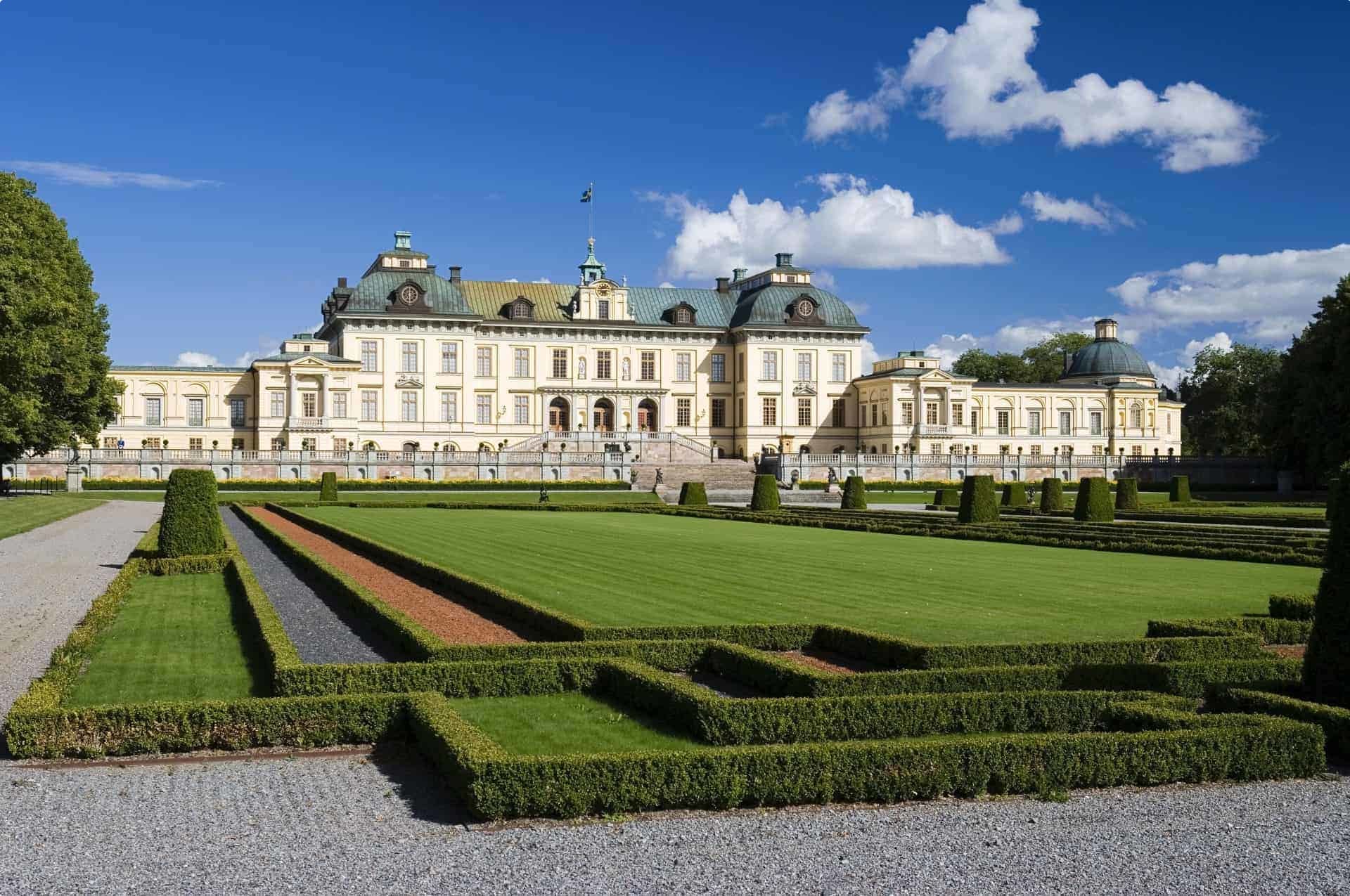
Highlights of Scandinavia
Odyssey offers more than 140 scheduled small group tours to people from all over the world. Odyssey travellers share our passion for exploring and learning.
The Scandinavia tours are small group programs suitable for senior and mature couples or solo travellers.
Our 13 day Scandinavia tours for mature travellers is offered in June each year. Highlights of this educational tour include a walking city tour in Stockholm and a visit to the fabulous Vasa boat museum. Here, we take in the world’s best preserved 17th century warship. We explore the Danish capital, Copenhagen and learn about Denmark’s fascinating history. We also trace the region’s sea-faring culture through Oslo’s Viking Boat Museum and visit the home of national composer Edvard Grieg, in Bergen. In addition, the tour also traverses vast Swedish lakelands and dense forests, passing impressive Gripsholm Castle by Lake Malaren.
And if design is your passion, and this article on Sweden has piqued your interest, consider our 21 day Scandinavian Design small group tour, covering Sweden, Denmark and Finland for a memorable travel experience.
For more details about the Scandinavia tours for mature travellers, follow this link to the tour page. If you’re keen to experience this tour, please call or send an email. Or, to book, simply fill in the form on the right hand side of the tour page.
Originally published on January 31, 2018.
Updated on October 17, 2019.
Related Tours
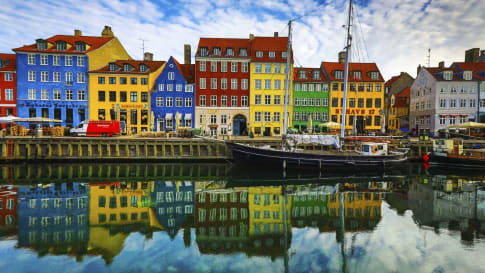
13 days
Jun, SepScandinavia tours for mature travellers
Visiting Denmark, Norway
Uncover on a small group tour for couples and solo travellers, a Viking past and view of the world’s biggest fjords on this journey through Scandinavia. In low-lying Denmark our small group journey takes us to visit the Zeeland, the sea land, and our program includes the vibrant capital of Copenhagen. In Norway we travel through endless forests, skirting great fjords to Bergen.
From A$14,995 AUD
View Tour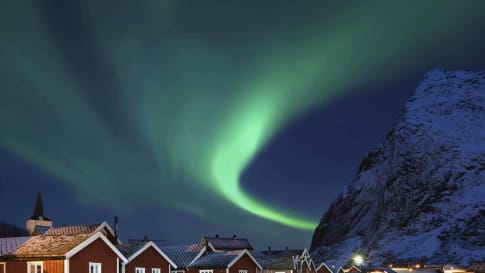
10 days
Oct, JanNorthern Lights Small Group tour | Visit Norway and Finland
Visiting Finland, Norway
Odyssey's small group tour following the Northern Lights allows you to experience serene snow-covered Arctic landscapes. Throughout our journey guides and specialists will outline the history of this stark region and the nature of the peoples who wrested their living from it. A unique opportunity to view this natural phenomenon travelling as part of a small group.
From A$9,625 AUD
View Tour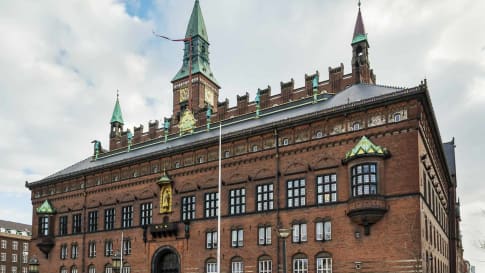
20 days
Aug, MayTour of Denmark's Culture & History
Visiting Denmark
Experience group travel for couples and single travellers to Denmark. This European tour provides a travel experience based around key destinations and itineraries that provide authentic experiences in Denmark .A single supplement applies for solo travellers.
From A$15,895 AUD
View Tour
